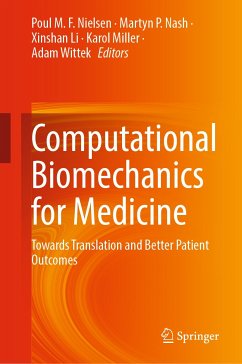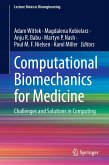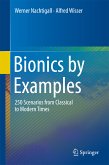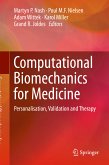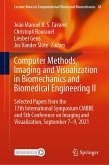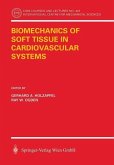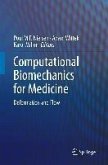This book presents contributions from the MICCAI 2021 Computational Biomechanics for Medicine Workshop. "Computational Biomechanics for Medicine - towards translation and better patient outcomes" comprises papers accepted for the MICCAI Computational Biomechanics for Medicine Workshop held virtually in conjunction with Medical Image Computing and Computer Assisted Intervention conference 2021, based in Strasbourg. The content focuses on methods and applications of computational biomechanics to medical image analysis, image-guided surgery, surgical simulation, surgical intervention planning, disease prognosis and diagnostics, analysis of injury mechanisms, implant and prostheses design, as well as artificial organ design and medical robotics. This book details state-of-the-art progress in the above fields to researchers, students, and professionals.
Dieser Download kann aus rechtlichen Gründen nur mit Rechnungsadresse in A, B, BG, CY, CZ, D, DK, EW, E, FIN, F, GR, HR, H, IRL, I, LT, L, LR, M, NL, PL, P, R, S, SLO, SK ausgeliefert werden.

